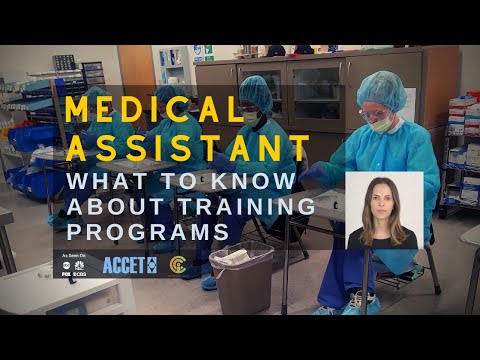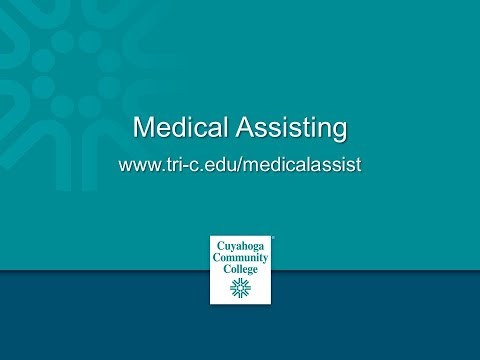How to Train to Be a Medical Assistant
Contents [show]
How to Train to Be a medical assistant is an online resource for those interested in pursuing a career in medical assisting. The site covers topics such as educational requirements, job duties, and salary expectations.
Checkout this video:
Job Description
CMA (AAMA)
The Certified medical assistant (CMA) credential denotes competence in performing administrative and clinical tasks in Doctors’ offices, clinics, HMO’s, hospitals, and other ambulatory healthcare settings. The CMA (AAMA) credential is awarded by the Certifying Board of the American Association of Medical assistants (AAMA).
Duties
Duties of a Medical Assistant
A Medical Assistant is a multi-skilled professional, trained to perform both administrative and clinical duties in a medical office. Typical administrative duties may include scheduling appointments, maintaining medical records and billing and coding insurance forms. Clinical duties may include taking patient histories and vital signs, preparing patients for examination, assisting the physician during the exam, and collecting and processing laboratory specimens. In many larger practices, Medical Assistants float between various offices or clinics performing both administrative and clinical duties as needed.
Education and Training Requirements
Most employers require that Medical Assistants have at least a high school diploma or its equivalent. Some Medical Assistants are trained on the job, but many complete formal programs offered by community colleges, technical schools, hospitals or vocational schools. Formal programs generally last 1 to 2 years and lead to a certificate or diploma. Many of these programs are accredited by the Commission on Accreditation of Allied Health Educational Programs (CAAHEP) or the Accrediting Bureau of Health Education Schools (ABHES). Some states have certification requirements for Medical Assistants. Certification is not required for all positions, but it may be preferred or required by some employers, particularly in specialty practices.
Skills
Becoming a medical assistant requires both classroom instruction and on-the-job training in order to develop the necessary skills. Depending on the employer, medical assistants may be required to take a certification examination.
Classroom instruction typically covers topics such as Medical Terminology anatomy and physiology, transcription, insurance billing and coding, and office practices. Students in medical assistant programs also receive instruction in basic clinical procedures such as measuring vital signs, obtaining patient histories and administering injections. Most programs also include an externship component that gives students the opportunity to apply their knowledge and skills in a real-world setting.
On-the-job training will vary depending on the employer, but may include shadowing more experienced medical assistants, observing procedures being performed, or completing hands-on tasks under supervision. As they gain experience, medical assistants will be expected to take on more responsibility and complete tasks with minimal supervision.
Education and Training
Education and Training
Medical assistant training programs are typically offered at community colleges, technical schools, and universities. Some employers also offer on-the-job training for medical assistants. Medical assistants must have a high school diploma or equivalent, though some employers prefer postsecondary education, and most medical assistant programs last about 1 year.
Programs typically include courses in office procedures, medical terminology, transcription, pharmacology, insurance processing, administrative procedures, and recordkeeping. In addition to formal classroom learning, students in many medical assistant programs gain experience through externships or hands-on training in a healthcare facility.
Salary and Outlook
Medical assistants held about 634,400 jobs in 2016. The median annual wage for medical assistants was $31,540 in May 2016. The median wage is the wage at which half the workers in an occupation earned more than that amount and half earned less. The lowest 10 percent earned less than $21,860, and the highest 10 percent earned more than $45,310.
Employment of medical assistants is projected to grow 23 percent from 2016 to 2026, much faster than the average for all occupations. An aging population will need more medical care as they live longer and have more chronic conditions, such as diabetes and heart disease. As a result, physicians will hire more medical assistants to do routine administrative and clinical tasks, allowing the physicians to see more patients.
Medical assisting is among the fastest-growing occupations over the next decade. A combination of an aging population that will require more medical services and an emphasis on preventive care will continue to spur demand for these workers
Licensure
Most states do not require licensure for medical assistants, however some states have certification requirements. The American Association of Medical Assistants (AAMA) offers the Certified Medical Assistant (CMA) credential, which is recognized in all states. To qualify for the CMA credential, candidates must graduate from an accredited medical assisting program and pass a national exam administered by the Certifying Board of the AAMA. Some employers may prefer or require certification, so it’s a good idea to check with your potential employer before enrolling in a training program.
Certification
There are many ways to become a certified medical assistant. Most
programs will require you to complete an accredited course and pass a
certification exam. Some states may also require you to pass a criminal
background check and/or complete a certain number of clinical hours. Once
you have met all the requirements, you will be awarded your certification.
Advancement Opportunities
Medical assistant positions may be found in a variety of medical settings, such as clinics, hospitals, physicians’ offices and insurance companies. Some assistants work in specialty areas, such as ophthalmology or podiatry. As the health care industry continues to grow, the demand for medical assistants is expected to increase.
Most medical assistants have completed postsecondary education, such as a certificate or associate degree program in medical assisting. These programs typically last about 1 year and cover both administrative and clinical duties.
Work Environment
Medical assistants work primarily in outpatient care facilities, such as medical offices and clinics. They also work in hospitals and in other healthcare facilities. Some travel to patients’ homes to provide medical care or take patients to doctor’s appointments. Most work full time, and some work evenings or weekends.
Job Outlook
The job outlook for medical assistants is very good. They are in high demand due to the aging population and the increased need for health care services. The Bureau of Labor Statistics projects that employment of medical assistants will grow by 29 percent from 2016 to 2026, much faster than the average for all occupations.







